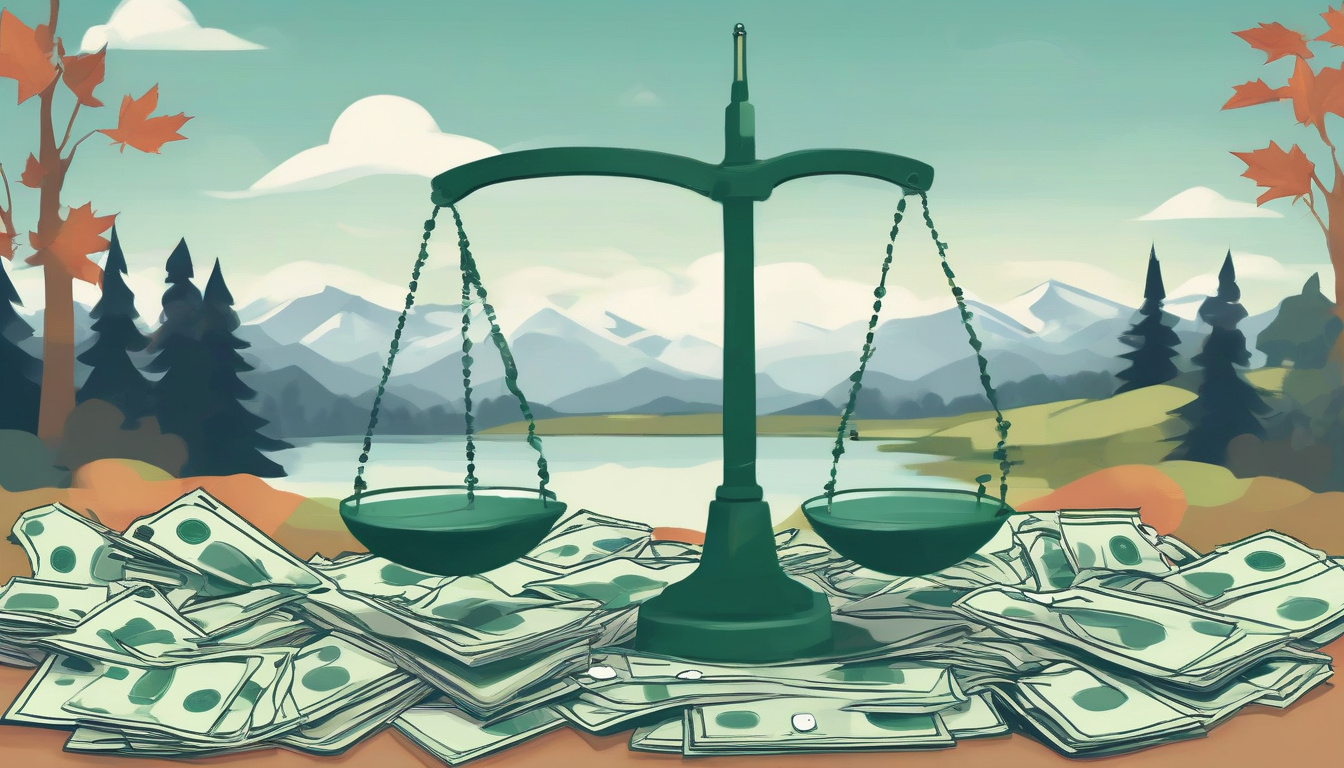In today’s fast-paced world, financial stress can weigh heavily on individuals and families. If you’re overwhelmed by debt, you may feel like you’re drowning in an endless cycle of payments and interest rates. This is where debt settlement programs come into play, offering a potential lifeline to those struggling to regain control of their finances. In this article, we’ll explore the mechanics of debt settlement programs, how they work, their benefits, risks, and the steps necessary to embark on your journey toward financial freedom. By understanding the ins and outs of these programs, you can make informed decisions that lead to a more secure financial future. So take a deep breath and get ready to learn how to breathe again through effective debt management.

Key Takeaways
- Debt settlement programs can significantly reduce your overall debt burden.
- Understanding how debt settlement works is crucial for effectively managing your finances.
- Choosing debt settlement programs can lead to financial relief and improved credit scores over time.
- There are potential risks and drawbacks to debt settlement that individuals should consider before proceeding.
- Taking the right steps to get started with debt settlement can pave the way toward financial freedom.
Understanding Debt Settlement Programs
Understanding Debt Settlement Programs
Debt settlement programs are financial solutions designed to help individuals struggling with significant debts achieve a reduction in what they owe. These programs typically involve negotiating with creditors to settle debts for a lower amount than originally owed, allowing borrowers to alleviate financial burdens and work towards becoming debt-free. Typically, individuals enroll in debt settlement programs with the help of specialized companies that handle the negotiation process on their behalf.
The appeal of these programs lies in their potential to eliminate debt more quickly than traditional methods, such as paying off the full balance over time. However, it’s essential to understand both the benefits and drawbacks. On the positive side, debt settlement can provide a sense of relief from aggressive creditors and reduce overall debt burden. Furthermore, participants often save money on interest payments, as settlements are usually negotiated as lump sums that cover only a portion of the total balance.
Nevertheless, debt settlement is not without risks. One major downside is that it can significantly impact an individual’s credit score, as settled debts are typically reported negatively. Moreover, not all debts are eligible for settlement, and the process may lead to tax implications for forgiven amounts. Therefore, before enrolling in a debt settlement program, it’s crucial for consumers to conduct thorough research, explore alternative options, and ensure they are working with reputable organizations.
By weighing the upsides and downsides, consumers can make informed decisions about whether debt settlement programs align with their financial goals.
How Debt Settlement Works
Debt settlement programs offer individuals struggling with unpaid debts a viable solution to regain financial stability. Essentially, these programs work by negotiating with creditors to reduce the total amount owed. Here’s how the process typically unfolds:
1. Enrollment in a Program: Once you decide to seek help, you enroll in a debt settlement program through a reputable agency. You’ll usually be required to provide financial information, including your income, expenses, and the details of your debts.
2. Creating a Payment Plan: The agency will analyze your financial situation and help you create a monthly plan that funnels specific amounts into a dedicated savings account. This account is separate from your regular bank accounts and is intended to accumulate funds meant for settling your debts.
3. Negotiation Phase: As you build up funds in your savings account, your debt settlement agency will begin negotiating with your creditors to settle your debts for less than what you owe. Skilled negotiators might advocate for settlements between 40% to 60% of the original debt.
4. Settling Debts: Upon reaching settlements, the amount agreed upon is paid to the creditors from your savings account. It’s crucial to note that the process can take several months or even years, depending on the total debt and your financial progress.
5. Impact on Credit Score: While debt settlement can significantly relieve financial burdens, it’s important to understand the trade-offs. Settling your debts could negatively impact your credit score in the short term. However, many find it preferable to this drawn-out cycle of high debt.
Debt settlement programs can be beneficial, especially for those who feel overwhelmed by their financial circumstances. However, careful consideration and understanding of the process are essential to make informed decisions.
‘The best way to predict your future is to create it.’ – Peter Drucker

Benefits of Choosing Debt Settlement Programs
Debt settlement programs offer numerous advantages for individuals struggling with unmanageable debt. One of the primary benefits is the potential for lower total debt payments. Typically, debt settlement involves negotiating with creditors to accept a lump-sum payment that is less than the total amount owed, which can lead to significant savings. Additionally, these programs can help individuals avoid bankruptcy, which has long-lasting effects on credit scores. By settling debts, individuals can improve their financial health and start rebuilding their credit sooner than if they had chosen to file for bankruptcy. Another key benefit is the reduction in stress and anxiety associated with debt collection efforts; debt settlement programs often include professional mediation with creditors, allowing individuals to step back from constant creditor calls and threats of legal action. Furthermore, many of these programs provide a structured approach to debt relief, which can motivate individuals to stick to their financial recovery plans and achieve long-term stability. Overall, debt settlement programs provide a viable option for those looking to regain control over their finances while potentially lowering their total debt burden.
Potential Risks and Drawbacks
While debt settlement programs can offer a viable route to financial relief for individuals struggling with overwhelming debt, they come with several potential risks and drawbacks that must be carefully considered. Firstly, one significant risk is the impact on credit score. Enrolling in a debt settlement program often leads to missed payments, which can lower your credit score substantially. This negative mark can stay on your credit report for up to seven years, making it difficult to secure new credit in the future.
Additionally, there is a risk of taxation on forgiven debt. The IRS considers forgiven debt as taxable income, which means that if a portion of your debt is settled for less than what you owe, you may face a hefty tax bill the following year, complicating your financial recovery.
Furthermore, not all debt settlement companies operate ethically. Some may charge high fees or fail to deliver on their promises, leaving consumers in a worse position than before. It’s crucial to conduct thorough research and look for reputable services, ideally with positive customer reviews and no complaints filed against them.
Finally, debt settlement can take a significant amount of time, often years, before the debts are fully resolved. During this period, creditors may still pursue aggressive collection tactics, including lawsuits, which can add additional stress to the individual seeking relief. Therefore, while debt settlement programs can be beneficial, understanding these potential risks and making an informed decision is essential.

Steps to Get Started with Debt Settlement
Steps to Get Started with Debt Settlement
Debt settlement programs can offer a viable solution for individuals grappling with overwhelming debt burdens. If you’re considering this option, it’s essential to understand the steps you need to take to effectively navigate the process. Here’s a step-by-step guide to help you get started.
1. Assess Your Financial Situation
Begin by taking a thorough inventory of your financial health. List your total outstanding debts, including credit cards, personal loans, and any other obligations, along with their respective interest rates. Understanding the full scope of your situation will help you decide whether debt settlement is the right path for you.
2. Research Debt Settlement Companies
Not all debt settlement programs are created equal. Look for reputable companies with solid track records. Check reviews, ratings, and any complaints filed with the Better Business Bureau. A good company should offer a free consultation and explain the process clearly without hidden fees.
3. Understand the Costs Involved
Most debt settlement programs charge a fee, typically a percentage of the settled debt amount. It’s important to have a clear understanding of these costs upfront. Additionally, make sure you know your obligations while the company negotiates with your creditors on your behalf.
4. Determine Your Budget for Settling Debt
Before enrolling in a debt settlement program, ensure you have a budget in place. Consider how much you can afford to set aside each month to cover potential settlements. Many programs suggest pausing payments to creditors to build up a lump sum. This can be risky, but it’s often necessary for effective negotiations.
5. Engage with Creditors Insurance and Equity Programs
Some creditors might offer their own debt relief programs or financial assistance options. Investigate whether any of your creditors have such programs, as they might provide a more manageable path to resolving your debts.
6. Start Negotiating
Once you’ve selected a debt settlement program, it’s time for the negotiations to begin. While your settlement provider typically handles this process, stay engaged. Be prepared for back-and-forth communication, and remain patient. It may take time, but persistence can often lead to favorable outcomes.
7. Review Settlement Offers
When the debt settlement company receives offers from creditors, review them carefully. Ensure that the proposed settlements are manageable and that you are comfortable with any terms. Ideally, you should aim for a settlement that is less than half of what you owe to see substantial relief.
8. Finalize Agreements and Make Payments
Once you accept a settlement, make sure to get the agreement in writing. This document should outline the total amount to be paid, the payment schedule, and confirm that the account will be marked as settled. Once you receive that, make your payments promptly to avoid any issues.
9. Monitor Your Credit Report
After completing a debt settlement program, keep an eye on your credit report to ensure that settlements are reported accurately. This can help you recover your credit score over time and reflect your improved financial status.
10. Consider Financial Counseling
After settling your debts, consider working with a financial counselor. They can help you develop a plan to manage your finances moving forward, ensuring you don’t find yourself back in a cycle of debt.
Frequently Asked Questions
What are debt settlement programs?
Debt settlement programs are services offered by companies that negotiate with creditors on your behalf to reduce the total amount of debt you owe. They aim to help you pay off your debts for less than the full balance, allowing you to achieve financial freedom.
How do debt settlement programs work?
Debt settlement programs work by having you make monthly payments into an account managed by the settlement company. Once enough funds are accumulated, the company will negotiate with your creditors to settle the debts for a reduced amount.
What are the benefits of choosing debt settlement programs?
The primary benefits include reducing your overall debt amount, consolidating multiple payments into one monthly payment, potentially stopping collection calls, and helping you avoid bankruptcy.
Are there any risks or drawbacks associated with debt settlement programs?
Yes, there are several risks such as potential damage to your credit score, tax implications on forgiven debt, and the possibility that creditors may not agree to settlements. It’s essential to thoroughly research and understand these factors before proceeding.
What steps do I need to take to get started with a debt settlement program?
To get started with a debt settlement program, you should first assess your financial situation, research and choose a reputable debt settlement company, gather your financial documents, and reach out to them for a consultation.
